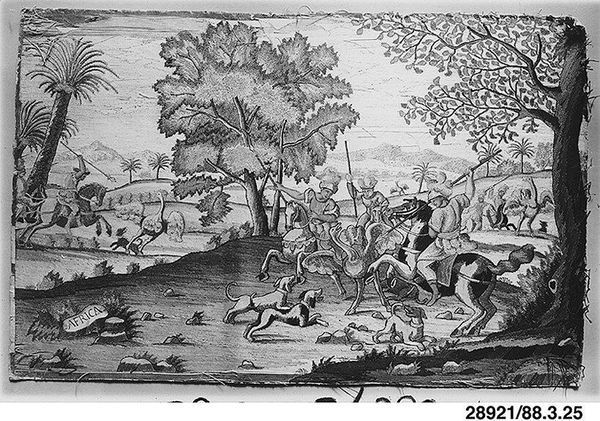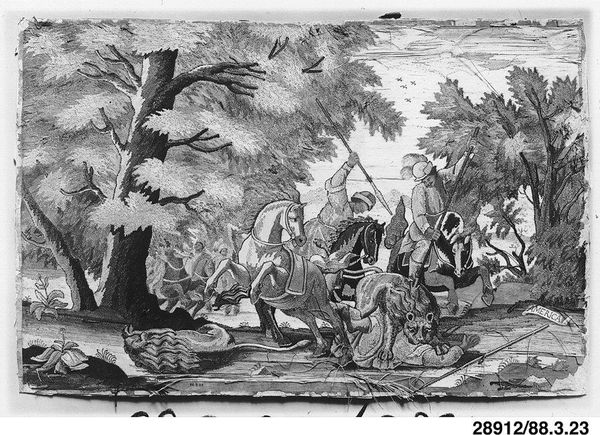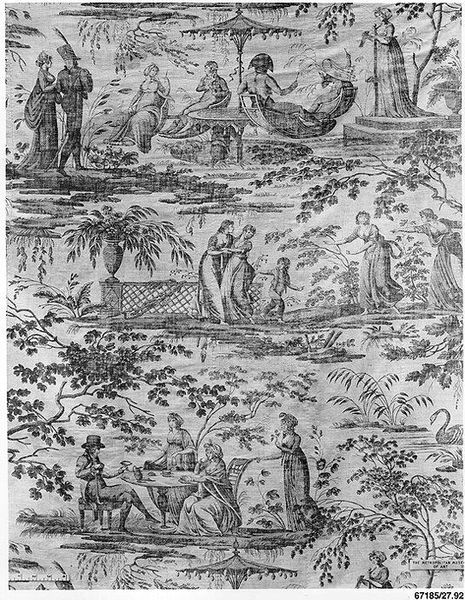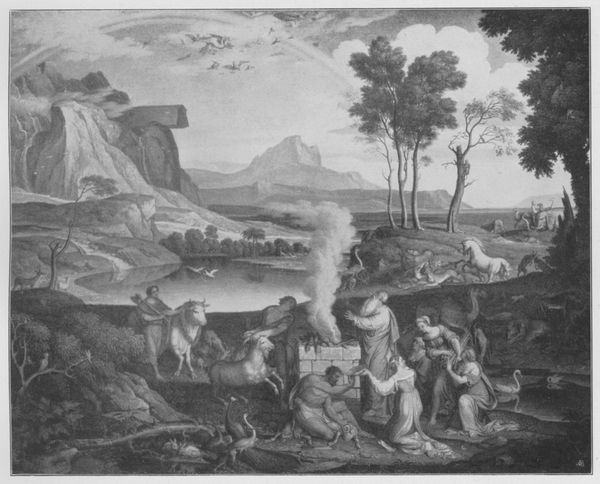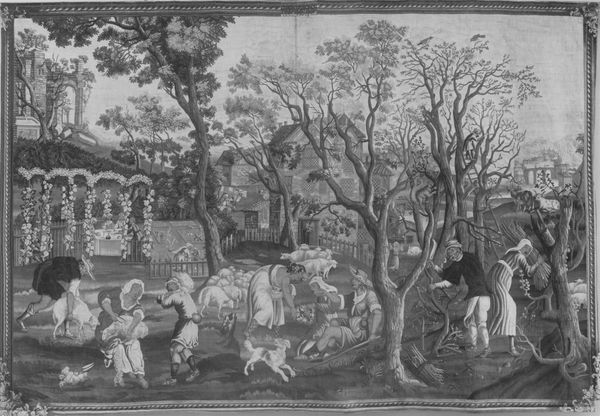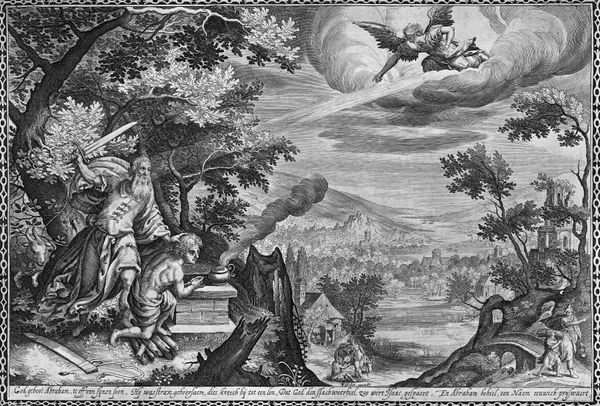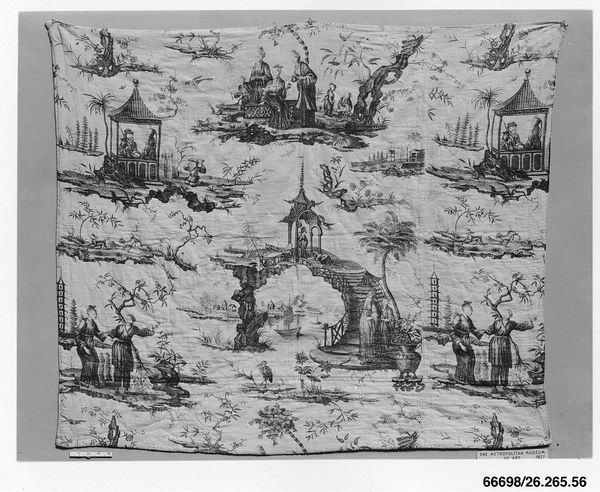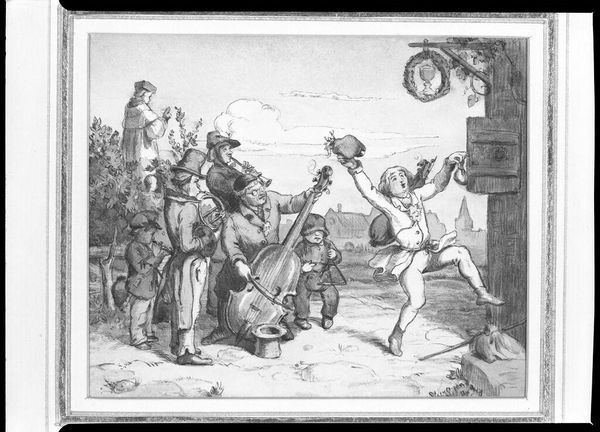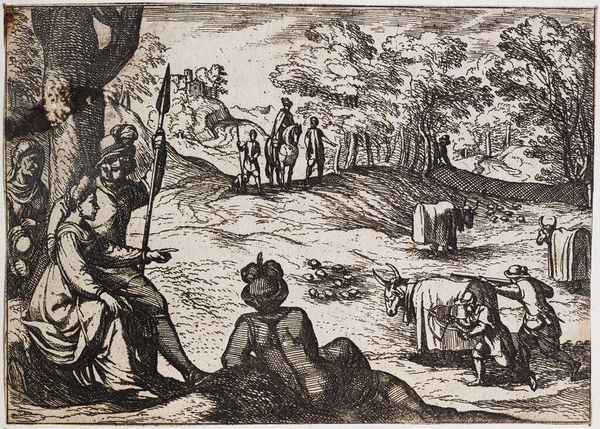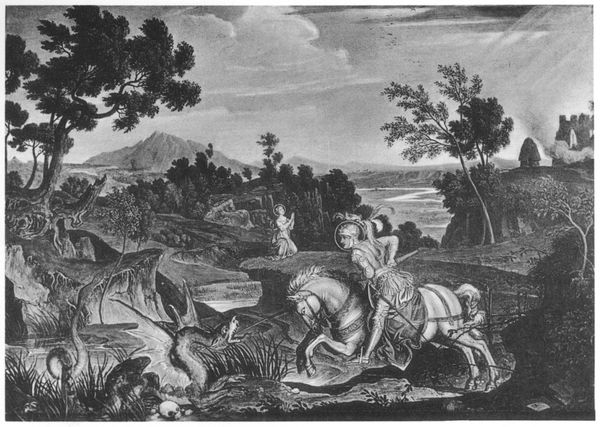
print, engraving
#
baroque
# print
#
landscape
#
figuration
#
line
#
history-painting
#
decorative-art
#
engraving
Dimensions: L. 17 1/4 x W. 24 inches (43.8 x 61 cm)
Copyright: Public Domain
Leonardus Quesi's rendition of "Offerings of Cain and Abel," created in the 17th or 18th century, presents a pivotal biblical narrative with deep social implications. Quesi, positioned within a society marked by rigid hierarchies, uses the story of the first siblings to explore themes of divine favor, labor, and social status. Here, Abel, the shepherd, offers the firstlings of his flock, while Cain, the farmer, presents the fruits of his labor. The rejection of Cain’s offering speaks volumes about the era’s values, where animal husbandry was often esteemed over agriculture, reflecting a bias towards pastoral lifestyles. It also introduces complex questions of identity and worth, as Cain’s agricultural identity is seemingly devalued. The emotional weight of this scene lies in the implied judgment and the devastating consequences that follow. Quesi captures a moment laden with tension, setting the stage for a narrative that resonates with the struggles for recognition and acceptance that continue to shape our societies.
Comments
No comments
Be the first to comment and join the conversation on the ultimate creative platform.
